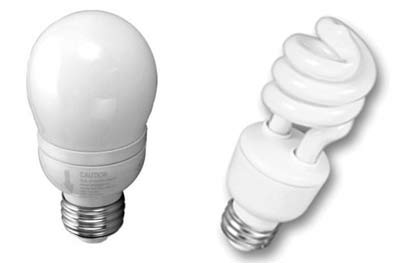Whatever Happened to Energy Conservation?

Editor's Note: This article is part of an occasional LiveScience series about ideas to ease humanity's impact on the environment.
The most talked-about solutions for global warming involve alternative energies, but the straightest line to reduced greenhouse gas emissions is using less energy, period.
"The cheapest, cleanest energy is the energy you don't use," said Jenny Powers of the Natural Resources Defense Council (NRDC).
The idea was once called energy conservation, but that gave the impression of sitting at home in the dark wearing three sweaters to stay warm. The more favorable term is "efficiency," which implies doing more with less.
A report issued earlier this year by McKinsey & Company, a global management consulting firm, found that adopting certain efficiency measures could cut the increase in the world's energy demand by more than half, without sacrificing economic growth.
"It doesn't seem as sexy as solar and wind, but efficiency is the cornerstone of reducing our environmental impact," Powers told Livescience.
Waste not
Get the world’s most fascinating discoveries delivered straight to your inbox.
The world consumed 422 quads of energy in 2003 (a quad is a quadrillion BTUs, or the energy in 180 million barrels of oil). The United States alone used 92 quads in the same year, making it the largest single energy consumer.
The report, "Curbing Global Energy Demand Growth," predicts that global consumption will increase by 2.2 percent annually, reaching 613 quads in 2020. However, by becoming more efficient, the world could slow its growing appetite, so that only 478 quads are needed in 2020.
These cuts don't have to hurt. In fact, many of the report's energy-conserving proposals would pay for themselves in a few years, but the problem is that most people and organizations don't realize how they are being wasteful.
To raise awareness in the industrial sector, the Department of Energy has a program called Save Energy Now, which provides free energy assessments to the biggest energy-consuming plants in the nation. So far, assessors have visited more than 300 plants and identified more than $600 million in possible energy reductions, corresponding to 5.1 million tons of prevented CO2 emissions.
"This is why we are focusing on the largest consumers," said program manager Bob Gemmer. "The cost saving is a number you can get your arms around."
The assessments target fire-heating equipment and steam systems, which together account for almost 70 percent of industrial energy use. The DOE has recommended a range of efficiency improvements from adding proper insulation to installing a heat and power system that uses wasted heat to make electricity.
Companies are not obligated to make these changes, but Gemmer told LiveScience that many of the plants could cut their energy bill by almost 10 percent.
"There's a mindset out there that the best way to make money is to make more stuff," Gemmer said. But some companies could increase their profits by 50 percent just by reducing the cost of powering their plants.
Want not
Although industry accounts for 46 percent of energy consumption, more and more of the globe's energy is being used for homes, workplaces and transportation, especially in wealthier nations.
"Consumers are increasingly the driving force of energy consumption as the world economy has shifted away from industry and toward less energy-intensive service industries," according to the McKinsey report.
China alone could account for a third of the total growth in energy demand, thanks in large part to its burgeoning middle class and folks' desires for cars and appliances.
The report found the global residential sector had the greatest opportunity to reduce its energy demand by implementing better insulation, compact fluorescent lighting and high efficiency water-heating.
But surprisingly one of the biggest inefficiencies in the home is standby power: the little lights and displays that stay on when you turn something off. Standby power consumes between 20 to 60 watts, which may not seem like much, but over the course of a day it accounts for 4 to 10 percent of a house's energy consumption.
"The biggest standby culprits are your home computer and cable box," Powers said.
Why not
There is technology currently available that reduces standby power to 1 watt. In fact, most energy efficiency ideas—such as Energy Star appliances and sustainable architecture—exist right now, as opposed to some alternative energies, such as affordable solar panels that are still years away.
"Everything [in this report] is within the reach of today's technologies," said NRDC President Frances Beinecke. "Nothing needs to be invented. There are no magic wands. Americans will not be asked to live in trees or mud huts."
So what is holding us back? Part of the trouble is that efficiency does not have the big profile of a wind mill or a fuel-cell vehicle, Powers said. "You can't see it, touch it, taste it."
To increase perception, the report recommends that utility companies provide an itemized bill that lets consumers see how much each appliance is costing them and how much they could save by installing something more efficient.
- Whatever Happened to Solar Power?
- What's Your Environmental Footprint?
- Top 10 Emerging Environmental Technologies



